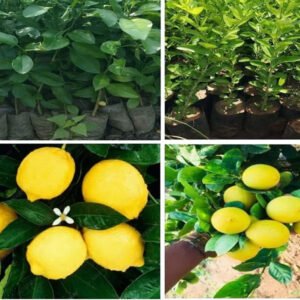Pixie Orange Seedlings
Pixie oranges are a cross between oranges and tangerines. This sweet seedless fruit is fleshy, juicy, and highly nutritious.
KSh 300.00
ComparePixie, botanically classified as Citrus reticulata, are a small, late-season variety belonging to the Rutaceae or citrus family. The specialty citrus comes into season in the late winter when most other citrus varieties are leaving the market and are known for their sweet and tangy, seedless flesh.
Pixies can grow in many different types of soils. However, the best soils are the well-drained sandy loam soils. Like many other fruit trees, pixie requires fertile soils with a high humus content and a pH between 6.5 and 7.4. The planting holes should be prepared well to a size of 2×2 feet – 2 feet wide and 2 feet deep. Separate the topsoil from the bottom soil and use the rich topsoil mixed with manure to plant your seedlings. Mix the soil and manure at a ratio of 1:2 (1 bucket of manure for 2 buckets of soil. When filling the whole with the mixture of soil and manure, leave about 10 cm to create space for watering your seedlings.

Pixie orange trees grow to a height of 4 meters and spread to a radius of 3m. Therefore the recommended spacing for pixie is 3 by 5 meters: 3m from plant to plant and 5m from line to line. The distance between the rows of trees is kept at 5 meters to allow sufficient work space for spraying and harvesting. This space can also be used to grow cover crops such as beans.
Pests and diseases
Common pests that affect pixie oranges include mites, bark-eating caterpillars, mealybugs, aphids, leaf miners, and fruit flies. Diseases include gummosis, collar rot, twig blight, and damping-off.
To control gummosis there is a need to do a management practice that entails removing the dark, diseased bark and a buffer strip of healthy, light brown to greenish bark around the margins of the infection.
Allow the exposed area to dry out check from time to time and do a repeat frequently.
For collar rot disease, one can do an application of foliar sprays of phosphorous acid or treat it as advised by the experts.
Damping off is favored by abundant moisture in the soil. Adequate control of damping off can be achieved by avoiding infested soils and over-watering.
The good news is that grafted varieties are resistant to many of the common pests and diseases.
Maturity and Market
The trees begin to flower in the second year and can produce a few fruits in each tree. They attain maturity at around two to three years.
Heavy harvest is often experienced in the fourth year.
Supermarkets and grocery shops currently form the largest market for pixie oranges in Kenya.
A kilo of pixie retails from Sh110 to Sh200 depending on demand and supply.







There are no reviews yet.